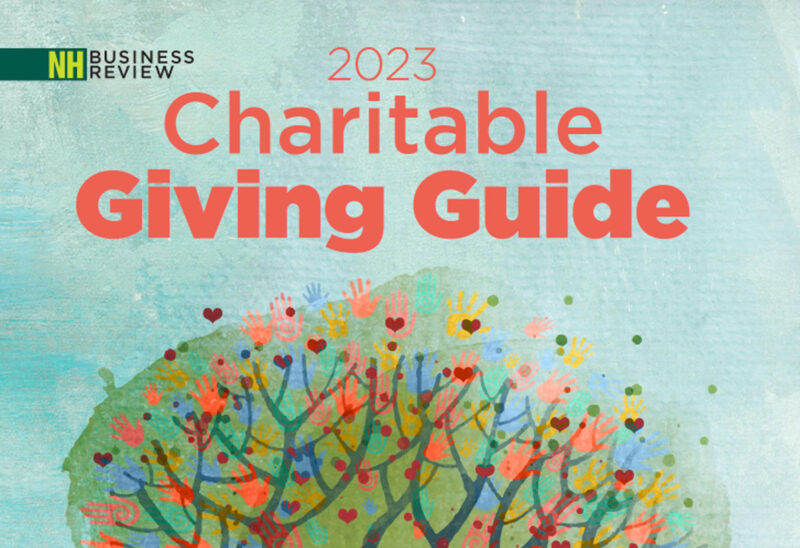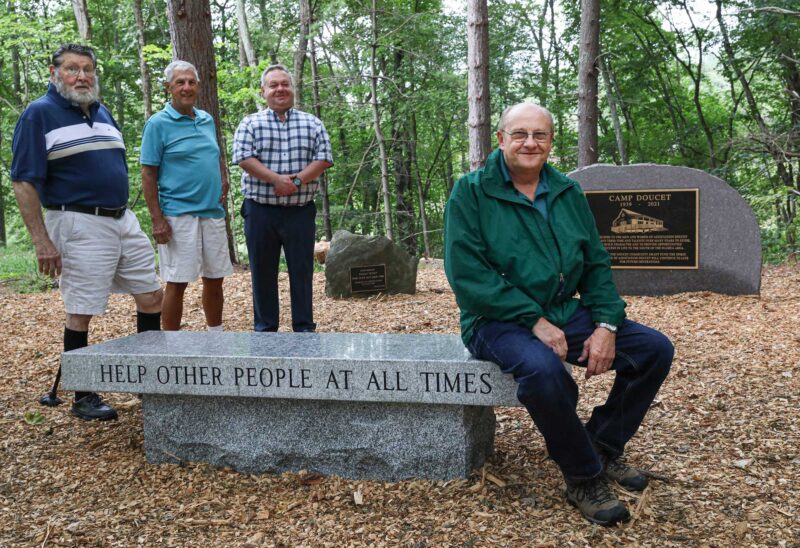Last November, a generous couple came to me with two enormous three-ring binders (and I am talking “did-you-bring-those-in-on-a-forklift?” enormous). The binders were straining at the rings — stuffed with appeals for worthy causes and nonprofits. Animals, the arts, hospitals, veterans groups, environmental organizations, organizations helping LGBTQ youth, museums, public broadcasting, organizations fighting poverty. This couple seemed to be on every mailing list in existence.
These folks are extraordinarily generous. They got on those lists for a reason, and they actually did want to be on many of them.
But now they were overwhelmed.
When the leaves turn in New Hampshire, the requests from hundreds of good organizations doing great work start to pour in. There’s a good reason for that: In the U.S., about 40 percent of all giving happens in the fourth quarter of the year.
This couple, who do most of their giving through a donor-advised fund at the New Hampshire Charitable Foundation, had collected the solicitations dutifully and organized them into binders by types of service provided. But that had not helped them much. They were daunted by the sheer magnitude of the need, the competing asks (all of which they felt obligated to answer), the absurd notion of prioritizing one critical service over another. The weight of the world was in those binders.
They needed a plan for strategic philanthropy, not just a checkbook and a roll of stamps.
If you have $200 to give or $200,000 to give, having a personal plan for giving is always a good idea.
We put the binders out of sight, at least temporarily.
And we talked about what mattered to them. We focused on two basic questions: What matters most to you, and how can you make the biggest impact?
The conversation became pretty specific and totally impassioned. They talked excitedly about gifts they had made in the past. Scientific research mattered to them, and they had helped buy some pretty important tools for researchers at the University of New Hampshire Shoals Marine Lab. Helping LGBTQ youth really mattered to them. Medicaid expansion, historic preservation, health care for poor folks, protecting the Great Bay watershed. We talked about organizations doing great work in New Hampshire.
And they made their plan: Deciding how much they would give, learning about nonprofits doing good work and distributing gifts in a way that was deliberate and designed to have the maximum effect. When they were done, they knew they were making a real difference in areas that they felt were critically important to our communities. And they felt great about their giving.
Getting Started
As you think about your own giving at the end of this year, here are five ideas to help sort through the possibilities for where to give, and how to give for maximum effect:
1. If you plan to give a substantial amount, talk to your financial and philanthropic advisors. Discuss what assets to give and the different giving vehicles that are available.
2. Think about what matters most to you. Try asking yourself this question: If I could spend two weeks volunteering for any cause or nonprofit, what would it be? Go around the supper table, and have the whole family answer the question. It will make for great conversation, and the answers will provide some pretty good guidance for your giving. Save the solicitations that come in — and then organize them according to your (and your family’s) answers to this question.
3. Do some research. What organizations in your community are working on the issues that matter most to you? Do you have a clear sense of what your donations to the organization will support?
4. Consider, if you have multiple issue areas that you want to support, choosing one or two each year and focusing your research and giving there, and then moving on to different areas of focus next year.
5. Get the family involved. Giving together is a great way for families to share interests and values. When children are involved in giving (and volunteering) — even at very modest levels — they learn the joy and importance of becoming contributing and involved members of their communities. And when children learn by doing, they are far more likely to carry on their family’s philanthropic traditions.
Jenifer Cannon served as the director of development and a senior philanthropy advisor at the New Hampshire Charitable Foundation.
To discuss how to best achieve your philanthropic goals, please contact Melinda Mosier, vice president of donor engagement and philanthropy services, at zryvaqn.zbfvre@aups.bet or 603-225-6641 ext. 266.








![Oluwakemi Olokunboyo of Dover received a McNabb scholarship to study nursing at Great Bay Community College [Photo by Cheryl Senter]](https://www.nhcf.org/wp-content/uploads/2024/05/Scholarship-Hero-800x548.jpg)
![Indrika Arnold, Senior Wealth Advisor, the Colony Group [Photo by Cheryl Senter]](https://www.nhcf.org/wp-content/uploads/2024/05/Indrika-Arnold-Hero-800x534.jpg)









